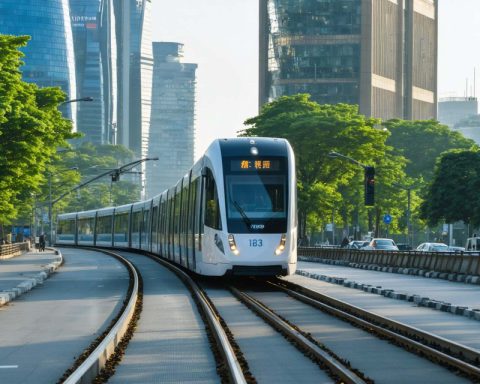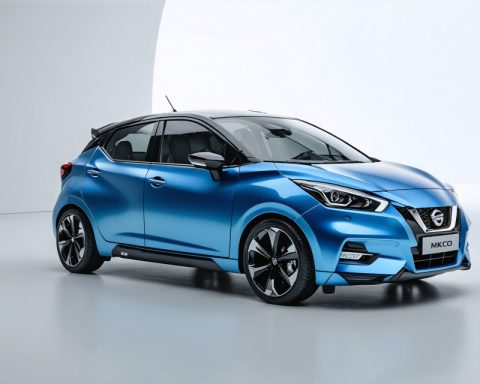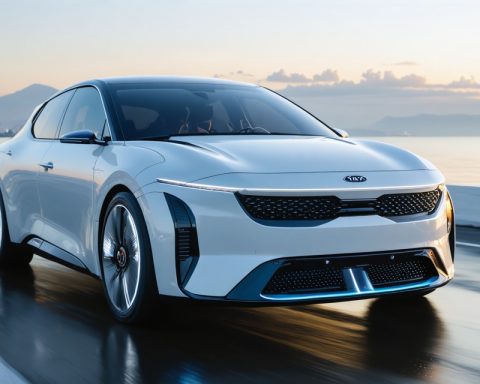- Worldwide protests erupted against Elon Musk, criticizing his influence and entanglement with political entities.
- Demonstrators from New York to Sydney targeted Tesla dealerships, promoting the “Tesla Takedown” movement.
- The protests stemmed from Musk’s role in the “Department of Government Efficiency,” sparking fears of his anti-institutional agenda.
- Events varied globally, from placard-waving in London to colorful graffiti on Tesla vehicles in Berkeley, reflecting diverse methods of dissent.
- Vandalism occurred at some protests, leading organizers to stress their commitment to non-violent tactics.
- The unrest underscores concerns over corporate overreach and its impact on democracy and governance.
- The movement calls for corporate accountability and protection of public interests against privatization.
A vivid spectacle unfolded across the globe, ceaselessly vibrant and unyielding, as thousands rallied against Elon Musk, the enigmatic tech mogul whose alliances and ambitions have sparked fierce debates. From the bustling streets of New York to the serene avenues of Sydney, a wave of protests surged, targeting Tesla dealerships in various corners of the world.
Stirring with determination, protestors transformed cityscapes into stages of defiance, urging the masses to reconsider their relationship with what has become both a technological marvel and a symbol of controversy. They implored the world—do not purchase a Tesla, divest from Tesla stocks, and join the “Tesla Takedown” movement. The rallying cry was unmistakable: stymie Musk’s influence.
The genesis of this global uproar lies in Musk’s unorthodox entanglement with political powerhouses and his audacious plans to trim the US federal government. His role within the shadowy-sounding “Department of Government Efficiency” has led critics to accuse him of waging a subversive campaign against public institutions. Such actions have not only stirred the ire of those dependent on these services but also galvanized a leaderless network into coordinated actions against his ventures.
Echoes of discontent rang through the air, resonating from Auckland to Austin, capturing the imagination of a populace weary of unchecked influence. Each protest bore its distinctive character, yet collectively they painted a mosaic of resistance. In London, demonstrators congregated amid the bustling traffic along the A40, their placards hoisted high like modern-day standards of dissent. Meanwhile, in Berkeley, California, the air whipped with colorful spray paint as protestors adorned a towering effigy of the Cybertruck with impassioned graffiti.
The atmosphere bristled not merely with anger but with a shared resolve—a palpable sense of purpose uniting disparate groups against a singular foe depicted in Musk. The flashpoint in New York City epitomized the urgency, as throngs flooded the showroom front, calling out Musk’s perceived affronts with a fervor reminiscent of yesteryear’s protests against imperial and corporate giants.
Yet amidst the synchronized uproar, a darker undercurrent emerged. Instances of vandalism punctuated the demonstrations, sparking debate over the boundaries between protest and violence. While some brazenly etched incendiary symbols onto Tesla vehicles, organizers resolutely condemned such actions, reaffirming their adherence to non-violent disruption.
This dichotomy—between peaceful protest and destructive backlash—underscores a broader narrative of contemporary unrest. It’s not just about the public’s fear of a tech titan’s overreach; it’s a deeper, more profound statement about democracy, governance, and the tangled web of corporate influence. As the Tesla Takedown movement unfolds, it sharply outlines the paradoxes of a world captivated by innovation yet cautious of its champions.
Amid the clamor, the collective voice resounds: this movement isn’t just about electric cars or even Elon Musk directly. It’s a clarion call for accountability, a plea for preserving public welfare against privatization’s tide, and a testament to the enduring power of community action in shaping tomorrow’s world. As the sun sets on this day of global protests, the question remains—what new dawn will this movement inspire?
The Global Uproar Against Elon Musk: What’s Really Fueling the Protests?
The recent global protests against Elon Musk and his enterprises, specifically targeting Tesla, have captured the world’s attention. While the demonstrations may appear to be a direct affront to Musk and his expanding influence, they are emblematic of broader concerns about corporate power, accountability, and governance.
Understanding the Protestors’ Grievances
1. Political Concerns:
Protestors are worried about Musk’s role in shaping policy through platforms like the “Department of Government Efficiency.” This controversy stems from fears that his involvement represents an inappropriate blending of private interests and public governance.
2. Environmental and Ethical Issues:
While Tesla is praised for its advances in electric vehicles, critics point out the environmental impact of lithium mining necessary for car batteries. Ethical concerns also linger about working conditions in Tesla’s factories, which have been previously reported in media outlets like the Guardian.
3. Social Media’s Role:
Musk’s often-inflammatory use of Twitter to influence markets and public opinion draws backlash, reinforcing perceptions of irresponsible corporate leadership.
Real-World Implications
– Market Impact:
The protests have generated significant media attention, which could influence Tesla’s stock price and consumer purchasing decisions, according to market analysts cited in Bloomberg.
– Tesla’s Brand Perception:
While Tesla remains a leader in electric vehicle sales, its brand reputation may suffer if protests persist, impacting consumer loyalty.
Pros & Cons of Tesla Vehicles
Pros:
– Innovative technology and robust performance.
– Significant environmental benefits compared to traditional vehicles.
– Extensive network of charging stations improving user convenience.
Cons:
– High upfront cost, despite long-term savings on fuel.
– Reports of quality control issues in manufacturing.
– Perceived association with Musk’s controversial actions and statements.
How-To Steps for Potential Tesla Buyers
1. Research Thoroughly:
Consider the full spectrum of available EVs, evaluating factors such as range, maintenance, and cost.
2. Evaluate Values Alignment:
Reflect on whether Tesla’s brand values align with your personal ethics and beliefs.
3. Monitor Market Trends:
Stay informed about developments in Tesla’s market performance and any potential policy changes impacting EV subsidies.
Future Predictions and Sustainability
– Shift Toward Accountability:
Businesses like Tesla may face increased demands for transparency and accountability due to the ongoing protests. This shift could foster more ethical business practices, suggests insights from Forbes.
– Evolving Energy Solutions:
The growing critique may push Tesla and its competitors to improve energy-efficient solutions and adopt more sustainable production methods.
Conclusion: Actionable Recommendations
For consumers and stakeholders considering their stance in this unfolding saga, critical steps include staying informed through reliable news sources, evaluating personal values in purchasing decisions, and participating in dialogues that drive corporate accountability. As these protests continue, they may indeed inspire change, catalyzing a movement towards more responsible business practices.
For more information on related topics, consider exploring Tesla and Reuters.













